|
Art has insightfully contributed to shaping the future throughout modern history and beyond; if not always forging reality itself, feeding our prospective imagination. In regard to literature, suffice to mention the visionary minds behind the novels From the Earth to the Moon, by Jules Verne; 1984 by George Orwell; or Mars Trilogy, by Kim Stanley Robinson, to name but a few. As for cinema, so that we keep it as close as possible to the imminent dystopian reality, one could recall Outbreak, by Wolfgang Petersen, or Contagion, by Steven Soderbergh. Yet, there is another film we could call into play in order to foster images and ideas that may offer us a devious perspective on intimacy in an era of space missions to Mars, HIV, COVID–19 and other pandemics alike. High Life, a feature by French director Claire Denis, takes place on a spaceship launched into the cosmos bearing a crew of expatriates whose diverse biographies have accomplished a vast array of crimes and misdemeanours – they all had been sentenced to death prior to their departure from planet Earth. This manned mission is destined to reach the outskirts of the universe, to source energy from a black hole and to conceive human life through artificial insemination in outer space. Here, instead of the most "apt and healthy" (as envisaged by NASA missions, for example), a vessel is filled with outcasts. The onboard scientist played by Juliette Binoche, condemned for having killed her very own baby in the earthly past, switches between scientific commitment and nymphomania. Notwithstanding, she uses her criminal peers as guinea pigs to give birth to a child in this increasingly hostile environment. And since sexual intercourse is prohibited in the spacecraft, in order to get sexually aroused, ejaculate and survive the deprivation of pleasure, they all make use of a special device called The Box: a dedicated S&M room of sorts, equipped with an ergonomic technology designed to fit the human sexual needs, deeds and desires. Within this volatile context, the crew is invested with deep, obscure purposes. Repressed sexual drive affects each and every passenger in this hermetic and remote capsule of life, producing the spark of madness that eventually unbalances that highly combustible atmosphere, unfolding an uncontrollable stream of violence and death. *** On a different note, consider another type of vessel, one that is not floating about the universe but instead rooted in a rather mundane, if not decadent environment, also designed for pleasure: a sauna. Brazilian artist Adriana Varejão has been obsessed painting steaming rooms for over 20 years now. Devoid of human presence, her grid-tiled canvases appear as both physical and mental spaces onto which one can project its most secretive imagination; those are rooms of utmost intimacy where fantasies and desires acquire shape. The human body, although absent in Varejão's saunas, remains an ever present ghost emanating frailty, sex, pain and pleasure – from time to time, the artist maculates her pristine surfaces with blood, or a wad of hair, remains of a fluid and perishable human nature. Those paintings transpire a residue of life: the stillness of an action that has just evaporated from earth. A moment suspended in time, or a moment of death, perhaps? Now, imagine not a spaceship but a sauna drifting in deep space, in the vacuum of time. No one is inside, just the interior covered in tiles, producing a steamy & misty atmosphere charged with the latency of human desire, impregnated by the vestiges of human dreams. This vessel might be carrying microbes, bacteria, illnesses elsewhere, nobody will ever know. Above all, this flying sauna encapsulates everything that once was human and is no more; this inhospitable room no longer serves any purpose as there is no man or woman to inhabit the ever-floating cocoon of imagination, sex, desire and struggle to breathe. ***  Sex in space remains a tacit taboo. No one talks about it – and presumably no one has ever had sex in outer space. NASA has never revealed any research on the well known odds of attempting to engage in sexual contact in a zero gravity room, although speculation allows us to imagine that synchronising the movements would be a difficult, if not impossible task – not to mention the amount of sweat produced by the human body under such conditions. Apparently, there would be bulky drips of sweat floating around, splashes of human sticky secretions all over the room, besides the thick layers of grease covering the lover's skins. Much has been said about cosmic sex between astronauts in space missions, although nothing has been confirmed yet. In the year 2000, an article in The Guardian, by Jon Henly, referred to a book published by a French science, space and astronomy writer called Pierre Kohler, who claimed that both US and Russian astronauts had enjoyed sex during separate important research programmes into how humans might survive for several years in orbit. According to Kohler's book, "there existed a confidential Nasa report, to which he had gained access, detailing a space shuttle mission in 1996 during which a project codenamed STS-XX was to explore precisely which sexual positions were possible in a weightless atmosphere; two guinea pigs had reportedly tested the 10 positions deemed most suitable for a spot of the old zero-gravity how's-your-father." The report, again according to Kohler's book, concluded that "only four positions were in fact possible in space without 'mechanical assistance' (the missionary position was not one of them). It added, tantalisingly, that a videotape, albeit censored, existed of the experiment." These claims ended up deemed as pure hoax by the space agencies of both nations. Who knows? Autores: Beatriz Helena Ramos Reis*, Bruno Veiga Fontes de Carvalho*, Prof Jonas Lírio Gurgel**, Prof Flávia Porto**Instituto de Educação Física e Desportos, Universidade do Estado do Rio de Janeiro (UERJ) 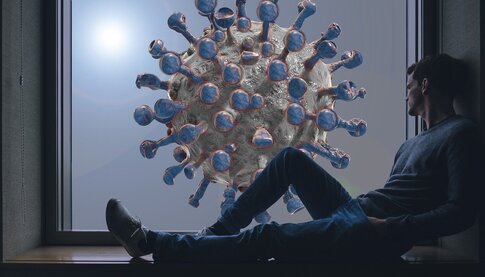 A pandemia de COVID-19 gerou a necessidade de utilizar medidas de distanciamento social para que haja a redução da disseminação do novo coronavírus. Contudo, têm-se percebido prejuízos na saúde física e mental dos indivíduos, porque a mudança brusca na rotina resultou em um novo estilo de vida das pessoas, que passaram a viver em confinamento. Aumento de preocupações, ansiedade, tristeza prolongada e sedentarismo são algumas das consequências ocasionadas ou agravadas pelo isolamento. Como forma de minorar esses efeitos, o exercício físico continua sendo reconhecido como uma estratégia não-medicamentosa eficaz que auxilia na prevenção e no tratamento de doenças físicas, metabólicas e/ou psicológicas. Entretanto, a suspensão e a limitação do uso de estabelecimentos, como academias de ginástica e clubes esportivos, para evitar aglomeração, levaram muitas pessoas a praticar atividades físicas regulares em casa. Nesse contexto, percebeu-se um fenômeno interessante na internet, que foi o aumento da busca por informações online. O Google Trends, por exemplo, é um recurso que expõe os termos mais pesquisados em diferentes lugares do mundo e revela sua popularidade em uma escala de 0 a 100. Nele, foi possível identificar o aumento da busca por informações relacionadas às consequências e necessidades geradas pela pandemia. Nesse contexto, vimos que, no Brasil, as buscas pelo termo “exercício físico em casa”, em Português, antes de março de 2020, teve popularidade baixa (oscilando na escala entre 0% e 25% de procura via Google). Após esse mês, quando se iniciou o distanciamento social no país, a busca pelo termo oscilou, aproximadamente, entre 40% e 100% até o momento atual. Ao analisar o termo “physical exercise at home”, em Inglês, notou-se que, em janeiro de 2020, as buscas estavam entre 0% e 25%. De fevereiro até maio deste ano, as buscas estiveram entre 25% e 100%, diminuindo em junho, momento em que vários países afrouxaram as regras de isolamento. Ao observar esses dados, notamos um aumento considerável na popularidade dos termos durante esse período, demonstrando um maior interesse de internautas sobre o assunto. Essas oscilações parecem ter relação com o fechamento e abertura de comércio e demais atividades no mundo. 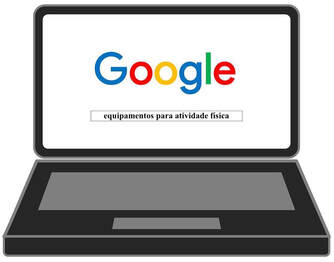 Interessante também mencionar a necessidade de adaptar os exercícios a ser realizados em casa. Dessa forma, percebeu-se que o interesse por equipamentos esportivos para realizar exercícios físicos em casa também aumentou, sendo demonstrado nas buscas no Google. A pesquisa pelo termo “equipamentos para atividade física”, nos dois primeiros meses desse ano, estava próxima a zero em níveis de interesse; já em março, o interesse aumentou bastante, chegando a atingir 100 no mês de abril. Em todo mundo, o termo “equipment for physical activity”, pesquisado na língua inglesa, mostrou pico de interesse (100 na escala) no mês de fevereiro e menor interesse próximo ao início de junho (0 na escala). Como a pandemia ainda não está controlada, inclusive com previsão de novas ondas de contágios e mortes, é bem provável que os hábitos das pessoas mudem, realmente, como forma de adaptação à nova realidade. Apesar da reconhecida resiliência das pessoas, não se pode negar que os prejuízos psicológicos são evidentes e, muitas vezes, é até difícil entender esses sentimentos e lidar com a magnitude que podem atingir. Pensando nisso, repetimos o processo de investigação no Google Trends e verificamos que o termo “depressão na quarentena” não apresentava interesse da população Brasileira entre janeiro e início de março (0 na escala) – esse desinteresse deve-se, provavelmente, ao fato de que ainda não existia o confinamento social no Brasil. Porém, a partir de março, a busca pelo termo cresceu muito, atingindo o pico de pesquisa (100 na escala) no início do mês de maio. Quando pesquisado, em Inglês, o termo “quarentine depression” também não houve interesse pela população mundial entre os meses de janeiro até o início de março. A partir daí, iniciou-se um aumento exponencial pela procura do termo, atingindo seu pico no mês de abril e, após, uma sequente diminuição até o mês de junho. Do espaço ao COVID-19: o que podemos aprender? Astronautas devem saber lidar com o confinamento e, apesar de serem submetidos a diversos tipos de treinamento para cumprir de forma adequada as missões espaciais, efeitos psicológicos provocados pelo confinamento são relatados na literatura. No caso da COVID-19, não houve preparo para essa nova realidade. Estamos todos tentando desenvolver mecanismos para desenvolver resiliência e melhor lidarmos com a pandemia e todos os acontecimentos relacionados à ela. A internet torna-se uma aliada, uma companhia provedora de informações e possibilidades de compras para as pessoas. O desafio agora é lidar com essa quantidade de informações, separando-as em relação à veracidade e à aplicabilidade.
Authors: Beatriz Helena Ramos Reis*, Bruno Veiga Fontes de Carvalho*, Prof Jonas Lírio Gurgel**, Prof Flávia Porto**Institute of Physical Education and Sports, State University of Rio de Janeiro (UERJ) 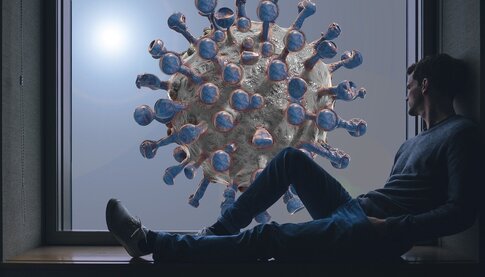 The COVID-19 pandemic has generated the need to employ social distancing measures to reduce the spread of the new coronavirus. However, negative effects on the physical and mental health of individuals have been noted, as the sudden change in routine has resulted in a new lifestyle for people, who are now spending their lives in confinement. Increased worries, anxiety, prolonged sadness and inactivity are some of the consequences caused or aggravated by isolation. Physical exercise continues to be recognised as an effective non-medication strategy that is useful for mitigating these effects, as it helps in the prevention and treatment of physical, metabolic and/or psychological diseases. However, measures taken to suspend and limit the use of establishments, such as gyms and sports clubs, to avoid people gathering together, have led to many people undertaking regular physical activities within the home. In this context, an interesting phenomenon has been seen on the internet, which is an increase in the search for information online. Google Trends, for example, is a resource reporting the most searched terms in different locations of the world and reveals the popularity of these terms on a scale of 0 to 100. It was possible from this to identify an increased search for information related to the consequences of the pandemic and the needs it has generated. It can be seen that in Brazil, prior to March 2020, searches for the term in Portuguese “exercício físico em casa” had low popularity (fluctuating between 0% and 25% on the scale of Google searches). The following month, after the beginning of social distancing within the country, the search for this term has varied between approximately 40% and 100% until the present day. When analysing the same term in English, it was seen that interest in this search varied between 0% and 25% in January 2020, whereas, from February until May of this year, searches rose to between 25% and 100%, before decreasing in June after several countries had relaxed their isolation rules. Analysis of this data evidenced a considerable increase in the popularity of the term during this period, demonstrating a greater interest in the subject by Internet users. These variations seem to be linked to the closing and opening of trade and other activities around the world. 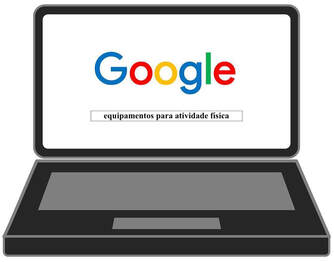 It is also interesting to mention the need to adapt to performing exercise at home. Consequently, it was noticed that interest in the sports equipment needed to practice physical exercise at home also increased, being demonstrated by searches on Google. The search for the term in Portuguese "equipamentos para atividade física" in the first two months of 2020 was close to zero in interest levels; by March interest had increased a lot, reaching 100 in April. From a global perspective, the term “equipment for physical activity”, researched in the English language showed a peak of interest (100 on the scale) in February and less interest by the beginning of June (0 on the scale). As the pandemic is not yet under control, and indeed with the prediction of new waves of contagions and deaths, it is very likely that people's habits will really change as a way of adapting to the new reality. While recognising that people are in general resilient, it cannot be denied that psychological damage is evident, and it is often even difficult to understand and deal with the magnitude of the feelings that may arise. With this in mind, we repeated the research process on Google Trends with the term in Portuguese “depressão na quarentena”, and found little interest from the Brazilian population between January and early March (0 on the scale), probably due to the fact that social confinement did not exist in Brazil at that time. However, from March onwards, the search for the term grew a lot, reaching a peak in searches (100 on the scale) by the beginning of May. Similarly, when researching the term “quarantine depression” in English, there was little interest in the world population between the months of January until early March, with a subsequent exponential increase in searches for the term, reaching a peak in April, followed by a decrease until the month of June. From Space to COVID-19: what can we learn? Astronauts need to know how to deal with confinement and, despite being submitted to various forms of training to adequately meet the challenges of space missions, psychological effects caused by confinement have already been reported in the literature. In the case of COVID-19, there was no preparation for this new reality, leaving us all trying to develop mechanisms to become more resilient to and cope better with the pandemic and all the events related to it. The Internet has become an ally, a service that provides information and shopping possibilities for people. The challenge now is to deal well with this volume of information, dividing it up in terms of what is true and what is applicable.
Authors: Prof Samira Bulcão Carvalho Domingues*, Prof Flávia Porto** and Prof Jonas Lírio Gurgel****Master's Degree student, Exercise and Sports Sciences/Institute of Physical Education & Sports/UERJ 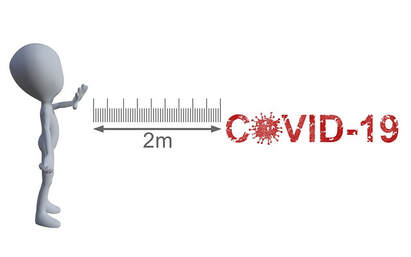 Image by Pete Linforth from Pixabay Image by Pete Linforth from Pixabay When faced with the COVID-19 global pandemic, a reduction in the numbers of people circulating is essential. It’s important to know there are differences between social distancing, isolation, quarantine and total lockdown, however, all of these strategies have one goal in common, which is to contain the speed at which the virus spreads and limit the collapse of health systems. In extended social distancing, those establishments considered to be non-essential are closed to avoid the gathering together of people, while in selective social distancing, people belonging to at-risk groups, especially the elderly, are encouraged to stay at home. In isolation, sick people (with suspected or confirmed disease) are separated from the non-sick, whether in a domestic or hospital environment. Quarantine is carried out by those people who have come into contact with or are suspected of having come into contact with the virus and, even if not presenting symptoms, they are isolated from others. When none of these measures work, a total lockdown is declared, like a community quarantine. Although essential, staying at home involves a radical change in the habits of a population, which may harm health in some way. Within the context of epidemiological normality, work, academic and leisure activities require a variety of effort that, taken together, maintain the minimum level of daily physical activity necessary for health, especially for sedentary individuals. An immediate interruption of these activities has a negative impact on the cardiorespiratory and muscle systems, responsible for maintaining functional capacity. This, in turn, is directly related to quality of life and the development of comorbidities. Similarly, and at the same time, physically active individuals are compelled to abruptly interrupt their exercise routines during this period. The damage caused by this halt in training includes losses in muscle strength and mass, aerobic capacity, and joint flexibility and mobility, in addition to alterations in body composition. The change from a physically active to sedentary life can affect important variables for health maintenance, including blood pressure, blood glucose and cholesterol levels. It is therefore advisable to use countermeasure strategies to combat the disuse. One of these is the practice of exercise - known to be the best non-drug health promotion strategy. The American College of Sports Medicine (ACSM) has already taken a position on the importance of staying physically active during isolation. The weekly recommendation for asymptomatic individuals is 150 to 300 minutes of aerobic exercise, plus two strength training sessions. One could, for example, do 5 workouts a week of 30 to 60 minutes, adding muscle strengthening exercises to two of them. The intensity should be moderate, as very light stimuli may not promote benefits, while very high intensities are associated with impaired immunity.
Although many people doubt the feasibility and efficiency of home training, the literature shows that results similar to those obtained in traditional gyms can be achieved by using one's own bodyweight as a load. Routines can include exercises based on calisthenics, both in aerobic (stationary running, climbing stairs, jumping jacks) and strength (squats, push-ups, planks) training. Accessible materials can help: elastic bands, skipping ropes, and even household items to increase the workload (water bottles, backpacks with books, bags with groceries). Authors: Prof Samira Bulcão Carvalho Domingues*, Prof Flávia Porto** and Prof Jonas Lírio Gurgel****Master's Degree student, Exercise and Sports Sciences/Institute of Physical Education & Sports/UERJ 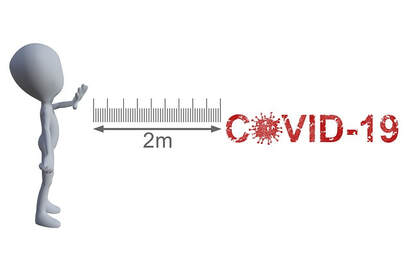 Image by Pete Linforth from Pixabay Image by Pete Linforth from Pixabay Diante da pandemia mundial de COVID-19, diminuir a circulação das pessoas é algo essencial. É importante saber que existe diferença entre distanciamento, isolamento social, quarentena e bloqueio total, porém, todas essas estratégias têm o objetivo comum de conter a velocidade de propagação do vírus e evitar o colapso dos sistemas de saúde. No distanciamento social ampliado, estabelecimentos considerados não essenciais são fechados para evitar aglomerações, enquanto que, no distanciamento social seletivo, pessoas pertencentes a grupos de risco, em especial, idosos, são estimuladas a ficar em casa. Já no isolamento, pessoas doentes (com suspeita ou confirmação da doença) são separadas das não doentes, seja em ambiente doméstico ou hospitalar. A quarentena é realizada por pessoas que tiveram contato ou suspeito de contato com o vírus e, mesmo não apresentando sintomas, ficam isoladas das demais. Quando nenhuma dessas medidas funciona, finalmente, é decretado o bloqueio total, como uma quarentena comunitária. Apesar de imprescindível, a permanência em casa implica em uma mudança radical nos hábitos da população, o que pode prejudicar, de alguma forma, a saúde. Em um contexto de normalidade epidemiológica, atividades laborais, acadêmicas e de lazer solicitam esforços variados que, somados, mantêm o nível mínimo de atividade física diária necessário para a saúde, especialmente de indivíduos sedentários. A interrupção imediata dessas atividades impacta negativamente os sistemas cardiorrespiratório e muscular, responsáveis pela manutenção da capacidade funcional. Esta, por sua vez, está diretamente relacionada à qualidade de vida e ao desenvolvimento de comorbidades. Da mesma maneira, no momento, indivíduos fisicamente ativos precisaram interromper bruscamente suas rotinas de exercícios neste período. Os prejuízos do destreinamento incluem perdas sobre força e massa musculares, capacidade aeróbia, flexibilidade e mobilidade articular, além de alterações na composição corporal. A mudança de uma vida fisicamente ativa para o sedentarismo pode impactar variáveis importantes para a manutenção da saúde, entre elas, pressão arterial, glicose sanguínea e taxas de colesterol. Assim, é oportuno lançar mão de estratégias de contramedida ao desuso. Uma delas é a prática de exercícios - sabidamente a melhor estratégia não-medicamentosa de promoção da saúde. O Colégio Americano de Medicina Esportiva (ACSM) já se posicionou quanto à importância de se manter fisicamente ativo durante o isolamento. A recomendação semanal, para indivíduos assintomáticos, é de 150 a 300 minutos de exercícios aeróbios, além de duas sessões de treinamento de força. Pode-se, por exemplo, realizar 5 treinos semanais de 30 a 60 minutos e, em dois deles, acrescentar exercícios de fortalecimento muscular. A intensidade deve ser moderada, pois estímulos muito leves podem não promover benefícios, e intensidades muito altas estão associadas a prejuízos à imunidade. Nikolaos Divinis BEng (Hons), MSc, PhDAerospace Engineer, Founder of EN School of Unity,  The ‘’black hole’’ is really one of the most mysterious celestial objects. Some people, indeed, claim that the laws of physics do not exist in its interior. A ‘’black hole’’ is that point in space where the core of a gigantic star used to be. It is a sphere of matter and not a material vacuum. Whatever ‘’falls’’ inside it ‘’gets lost’’ from the universe, because gravity here is so strong that even the light cannot escape from its tractive force. So, the term ‘’black hole’’ is used in this sense. ‘’Hole’’, because an object like this absorbs like a ‘’spacial whirlpool’’ anything that crosses its path, and ‘’black’’, because not even the light can escape from its ‘’surface’’ so as to be recorded by our eyes or by the various sensitive instruments of our observatories. It is a ‘’star’’ which has collapsed into an infinitesimally tiny size, leaving behind only the intensity of its gravity. Human beings need to go through a black hole in order to return to the original organism. Humans need to become healthy in order to ‘’rise’’. Not even the light can go through, as it does not express the complete sense of light that is diffused in the Universe, but it is only expressed as photon. A state of light of inferior quality. The black hole represents both symbolically and literally the condition which isolates our Universe, our galaxy from the sound concepts of the Universe. It is also, both in symbolic and literal terms, the gate through which someone can go to that side. To go through this gate, someone should understand the concept of love, which is the only concept that can be expressed to the full extent in our world, in modern civilisation, because it is the sole compass/lodestar that will lead us to the bliss of our existence as we take pleasure in the gift of this life, and later of the next.
Excerpt From a book by Nikolaos Divinis. “Humans, A conceptual approach to existence.” Daidaleos Publications, iBooks, Amazon Nikolaos Divinis BEng(Hons), MSc, PhDAerospace Engineer, Founder of EN School of Unity,  The Big Bang has thus far been the prevailing cosmogonic theory, according to which, the Universe was created by an excessively dense and hot state, approximately 13.8 billion years ago. According to science, time and space did not exist before the Big Bang. Only the cosmic core existed, that original seed of limitless dimensions, which enclosed the germ of a whole universe. Everything started with the ''Big Bang''. Time zero is the moment of explosion, from which everything originates. In a storm of creation, subatomic particles collide with each other and are ejected. Photons change into matter, matter changes into energy, energy changes into matter. Every material particle we see around us originates from that first millisecond. And reaching today, when the visible Universe contains approximately 3 to 7x1022 stars, which are organised in approximately 8x1010 galaxies. The reason behind the Big Bang The objective of every element of the Universe is to express its superessential state. This can be reached only by experiencing to the fullest the unity with itself and with the other elements that are widespread in the universe. A human being who has reached this state is free from everything, with no pettiness, having no problems with fellow humans, is healthy and has all that is needed to lead their life, is blessed, which means imperishable, steadfast, immune and irreproachable. Can a human being experience unity during their life? The answer is yes, because it is something contained within, but it has simply been forgotten. It was acquired and then was lost. The heart leads towards that way, but the will is not strong enough to oppose the prescripts of human society. All it would take is the will and the way to unity would be paved. Here on Earth humans are experiencing the loss of unity and at this space-time moment, the universe is their guide. ALL the conditions of our life are synchronized with this in mind. Everything started with the Big Bang. Scientists believe this was the beginning, but I would say, this was the end. The end of unity. And as the years go by, the elements increasingly move away from each other (the universe constantly expanding), in the same way human souls are moving away from the Source and from each other.
Science is led to conclusions through the experiment and observation, by means of analysis and not of synthesis. It interprets the findings through the limitations of the mind and through doubt, and not through the certainty that there is a wise cooperation behind everything. Fabrício Edler Macagnan PhDAssistant Professor, Dept of Physical Therapy, Graduate Program in Rehabilitation Sciences Can technology really be seen as something unnatural? Or is it plausible to assume that all the evolutionary processes developed on our planet have been truly responsible for our ability to promote evolution (transformation) in a fully conscious and directed manner? Well, if this is true, then we can say that “all technology is eminently a natural manifestation of the evolutionary process.”  In the ongoing developmental process, how many different random combinations were needed to enable the evolution of simple inorganic compounds into extremely complex living organisms, capable of interpreting, acting and reacting to environmental events? In the animal kingdom, we find numerous individual and collective actions that occur to ensure the preservation of species. Each of these strategies have been tested for efficiency by the process of natural selection, and from this perspective it can be said that the validation of a viable adaptation represents a natural manifestation of biotechnological development. These acts of biotechnological development range from behavioural patterns that are beneficial for preservation of the most adapted genes and, consequently, more prone to reproductive success, through to defence techniques using chemical substances capable of triggering complex and fatal metabolic reactions in opponents (to this day, the pharmaceutical industry maintain strong interest in these biotechnologies). There are numerous evolutionary strategies that could be described, but in short, each of these adaptations (strategies) could be framed under the concept of technology, as technology involves the systematic study of techniques, processes, methods, means and instruments that are used to achieve a determined goal. The great difference between the processes occurring at the beginning of species evolution and those that now occur is really the most remarkable fact of all development – the ability to become aware of certain processes of existence (life). Whenever I stop to think about it, I’m extremely curious to know at what point in evolution did the ability emerge of being able to connect information from different body movement receptors (sensors) in a sufficiently organised way to permit repetition (from a sequence of carefully and efficiently stored historical events) of the intensity, direction, and reaction of forces acting on moving bodies to the point of making interpretation and reaction intentionally directed for one's own benefit. This intricate capacity for historical analysis has enabled numerous evolutionary advances in species, which have since developed techniques for collecting, hunting, fighting and defending, whether individually or collectively, with such efficiency that survival in ensured, even in the face of drastic environmental transformations. Even more noticeable has been the developments in language and writing, a crucial step for storing and sharing huge volumes of information, which has accelerated the creation of useful techniques for dealing with questions involving mathematics, physics, chemistry, biology, astronomy, etc. Moreover, even after conquering land, sea and sky, all known sciences have undeniably been heavily affected by the computational advances in data processing and sharing (internet). Humankind has greatly enlarged knowledge of many natural events and even ventured into Space, but without a doubt, something that is truly spectacular is the surprising discovery of the nano-microscopic features that enable us to edit (manipulate) portions of our genetic library, a place where information has been perpetuated over eons. Future prospects for the use of gene editing in the scientific scenario remains unclear, but the possibility of acting intentionally at a molecular level may effectively contribute to a reduction in the need to treat disease and guarantee a new step in the evolutionary scale, in which our focus shifts to the promotion of health improvement and living conditions. 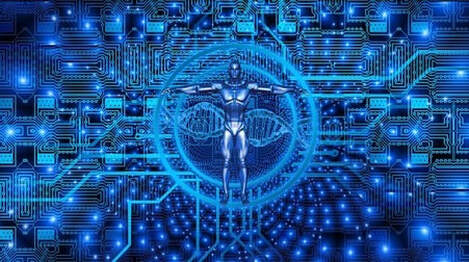 For a long time the natural selection of best strategies has been restricted to the field of spontaneous randomness, but we have now developed rigorously designed laboratory assessments to test hypotheses, which are validated through a specific set of statistical rules that increasingly allow us to project the future probability of success or failure of a given action. With new computational advances (Internet of Things and quantum processors) we will further accelerate the progress of technological development. There is, however, no point in so much technology if we maintain prehistoric attitudes that dominate behavioural rules. For example, greed, which was once so necessary for survival, is one such behaviour that, in my view, should have long since fallen into disuse, together with violence and war. An existence of peace and harmony is more than feasible. We have a huge arsenal of knowledge to ensure a much healthier future for all living beings on our planet - we just need to want it enough! I sincerely hope we have the wisdom needed to make good ethical and legal choices that lead us along a successful path for all. |
Welcometo the InnovaSpace Knowledge Station Categories
All
|
UK Office: 88 Tideslea Path, London, SE280LZ
Privacy Policy I Terms & Conditions
© 2021 InnovaSpace, All Rights Reserved






















 RSS Feed
RSS Feed